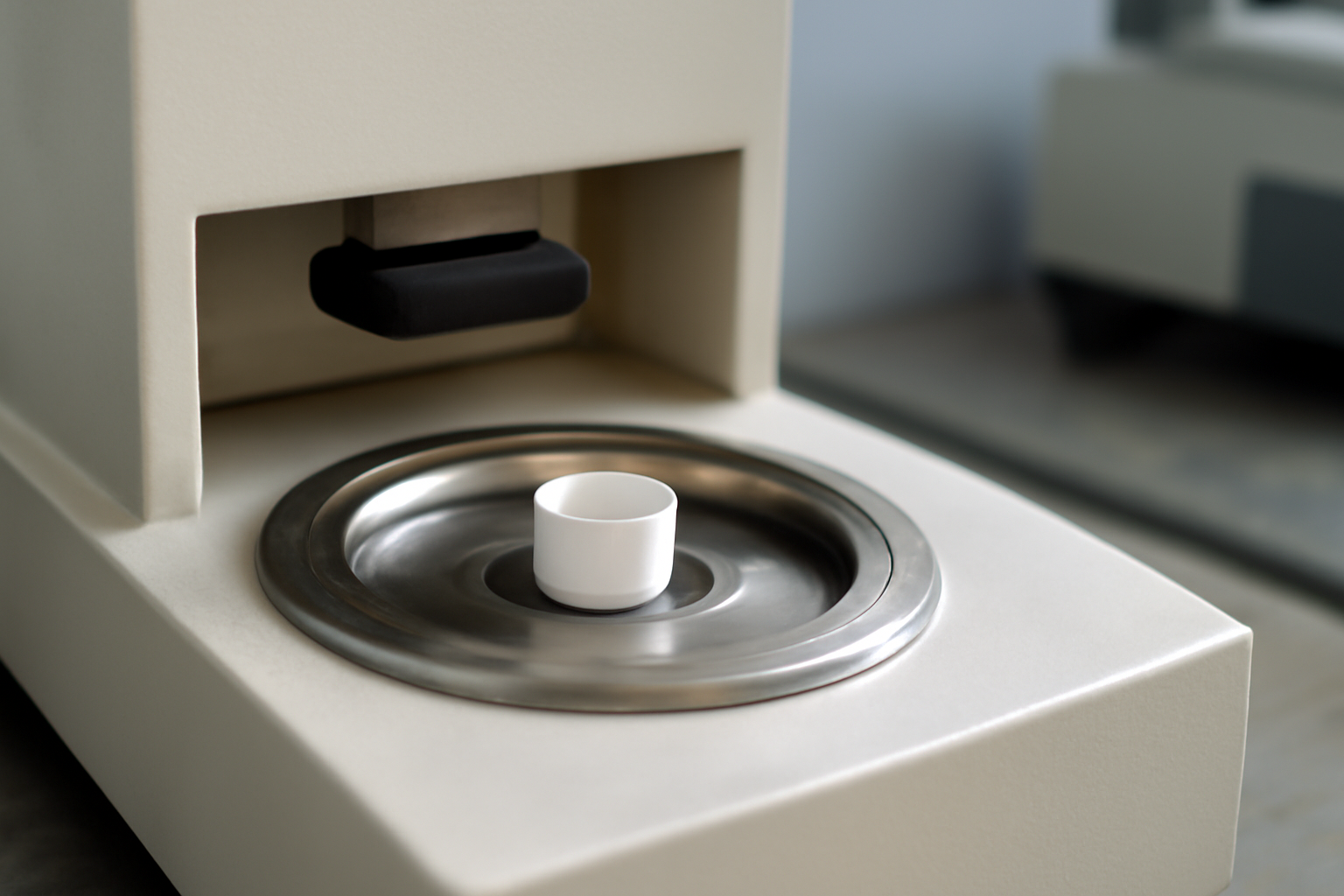
What Material Properties Matter Most in a Thermal Analysis Crucible?
Choosing the wrong crucible material can ruin an entire test. Accuracy, repeatability, and integrity all depend on choosing wisely.
The most important material properties in a thermal analysis crucible are thermal resistance, chemical inertness, weight tolerance, and heat conductivity. Each directly affects data quality, especially for DSC and TGA applications.

The crucible isn't just a container—it directly shapes your experiment's results. Many labs overlook the fine details like 0.01g tolerance or subtle reactivity. But these details separate good data from failed runs. Let’s explore what makes a crucible material truly reliable.
What is the temperature range of ceramic crucibles?
Using a crucible below its thermal limit can skew results, but exceeding it can destroy both data and hardware.
Ceramic crucibles vary in heat resistance by material. Alumina typically caps near 1500°C, while zirconia handles over 1600°C, making it ideal for high-temperature DSC or TGA experiments.

Understanding Crucible Thermal Limits
In thermal analysis, whether you're measuring polymer stability or pharmaceutical decomposition, knowing the crucible’s upper temperature limit is non-negotiable. For instance, aluminum deforms above 650°C, suitable for most routine DSC tests on organic samples. But if your project involves high-temperature ceramics or composite materials, you could exceed aluminum’s safe range fast.
Using alumina (Al₂O₃) is common in many university labs. It's stable up to 1500°C. But projects in aerospace or advanced energy materials often need something stronger. That’s where zirconia (ZrO₂) comes in—it can tolerate over 1600°C. When a client contacted me about DSC testing on lithium battery components at 1200°C, zirconia was the only viable choice. The test delivered clear transitions without abnormal baselines.
| Crucible Material | Max Temperature (°C) | Common Applications |
|---|---|---|
| Aluminum | ~650°C | Polymers, Organics |
| Alumina | 1500°C | Ceramics, Metals |
| Zirconia | >1600°C | Aerospace Composites, Batteries |
| Platinum | >1700°C | Precision Pharma, High-purity Mapping |
Do crucible weights impact thermal analysis accuracy?
Yes. Even a 0.01g deviation in crucible weight can create false peak shifts or baselines in sensitive instruments like DSCs.
Weight uniformity ensures proper signal response in instruments. Poor matching between test and reference crucibles leads to inaccurate heat flow readings and repeatability issues.
The Importance of Gravimetric Consistency
When I first started exporting crucibles, one client from a pharmaceutical lab returned a batch because each unit had a 0.015g weight gap. At first, I underestimated the issue. But in DSC, consistency isn't optional—it’s foundational. The system calculates heat flow based on differences between the sample and reference crucibles. Even tiny mismatches cause artificial shifts or mask real transitions.

For high-resolution work—like melting point detection in APIs (Active Pharmaceutical Ingredients)—a ±0.01g tolerance is critical. Labs often pre-weigh and shortlist crucibles for future experiments. This helps maintain batch-to-batch consistency, both for internal validation and for external regulatory filing.
| Material | Weight tolerance | Impact on DSC/TGA |
|---|---|---|
| Generic Aluminum | ±0.05g | Baseline drift risk |
| Precision Platinum | ±0.005g | Ideal for pharma validation |
| High-purity Alumina | ±0.01g | Good for academic use |
Which materials are chemically inert for thermal analysis?
Chemically inert crucibles prevent unwanted reactions with volatile or reactive samples, preserving test integrity and instrument lifespan.
Crucibles made from platinum, high-purity alumina, and sapphire offer strong chemical stability. They’re essential when testing corrosive or reactive substances in DSC or TGA setups.

Why Inertness Matters in Real Test Conditions
A research team I worked with was studying sulfur-containing compounds. Their standard aluminum crucibles produced ghost peaks. It turned out the sulfur reacted subtly with the container surface at elevated temperatures. After they switched to sapphire crucibles from us, the anomalies disappeared. This validated their hypothesis and helped secure a regulation-sensitive grant.
Each thermal analysis setup is different, but chemical inertness cannot be compromised. For pharma applications and new material development, it’s a must. Platinum stands out for both inertness and reusability. It handles acids, bases, and complex organics without visible degradation. But clients should also consider ceramics like sapphire (Al₂O₃·2SiO₂) when high inertness is needed and cost must stay under control.
| Material | Chemical Inertness | Application |
|---|---|---|
| Platinum | Excellent | Pharma, high-purity chemicals |
| Sapphire | Excellent | Battery, Semiconductor R&D |
| Alumina | Good | General lab use |
| Aluminum | Poor | Basic polymer analysis |
What tolerance is acceptable in crucible weights?
For high-precision thermal analysis, a crucible weight tolerance of ±0.01g or better is considered optimal by most labs and international standards.
This level of tolerance supports peak stability in DSC and enhances reproducibility across repeated runs or sample batches.
Configuring Repeatable Results Through Weight Control
One university customer told me their heat flow peaks shifted by 0.3°C across replicates using generic pans. This seems small but was enough to delay their journal submission. When they switched to our calibrated aluminum sample pans (±0.005g deviation), their data finally aligned perfectly. You can’t ignore this when working on temperature-sensitive substances like phase change materials or liquid crystals.
Large organizations like ASTM and ISO also refer to ±0.01g tolerances in white papers for DSC precision. For important results like melting points, crystallization, or degradation temperatures, especially in pharmaceuticals, strict tolerance helps secure regulatory trust. It's also a hidden cost saver—fewer repeats due to baseline drift means less labor and more confidence in your results.
| Industry | Typical Weight Tolerance Required | Reason |
|---|---|---|
| Pharmaceutical R&D | ±0.005g to ±0.01g | Validation, clinical accuracy |
| Academic Labs | ±0.01g | Replicability, peer-review data |
| Battery Materials | ±0.01g to ±0.02g | Efficiency curve modeling |
Conclusion
In thermal analysis, the right crucible material, weight precision, and chemical stability all determine experimental success and reproducibility.

Leave a comment